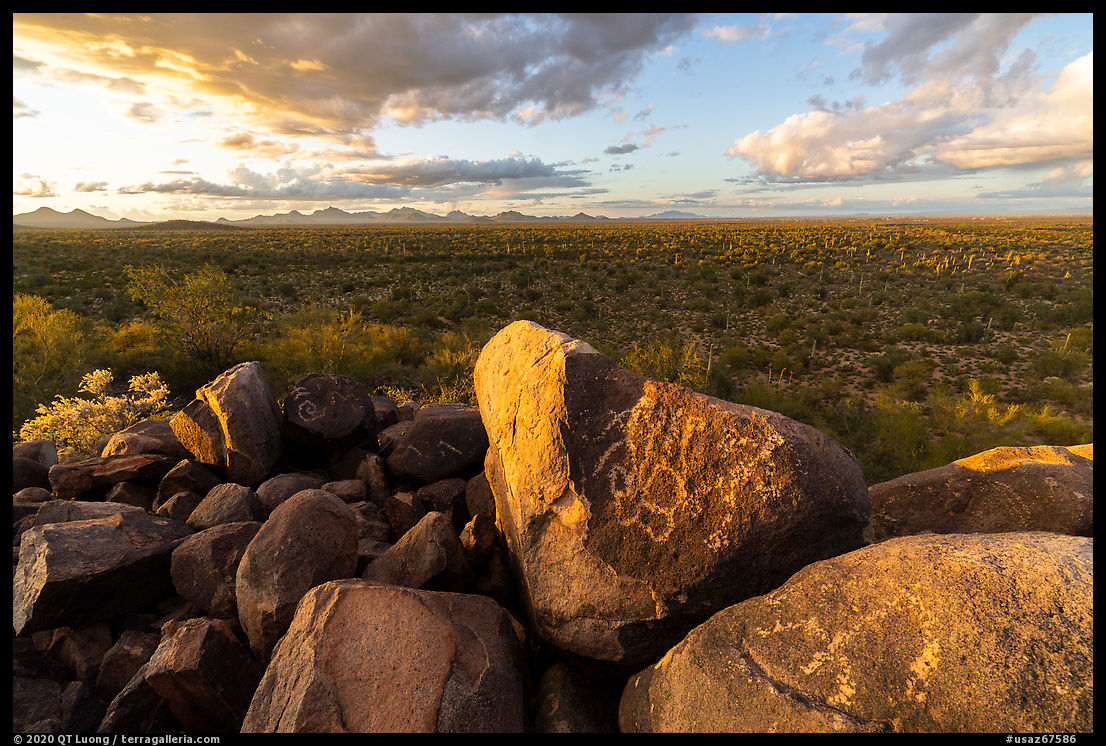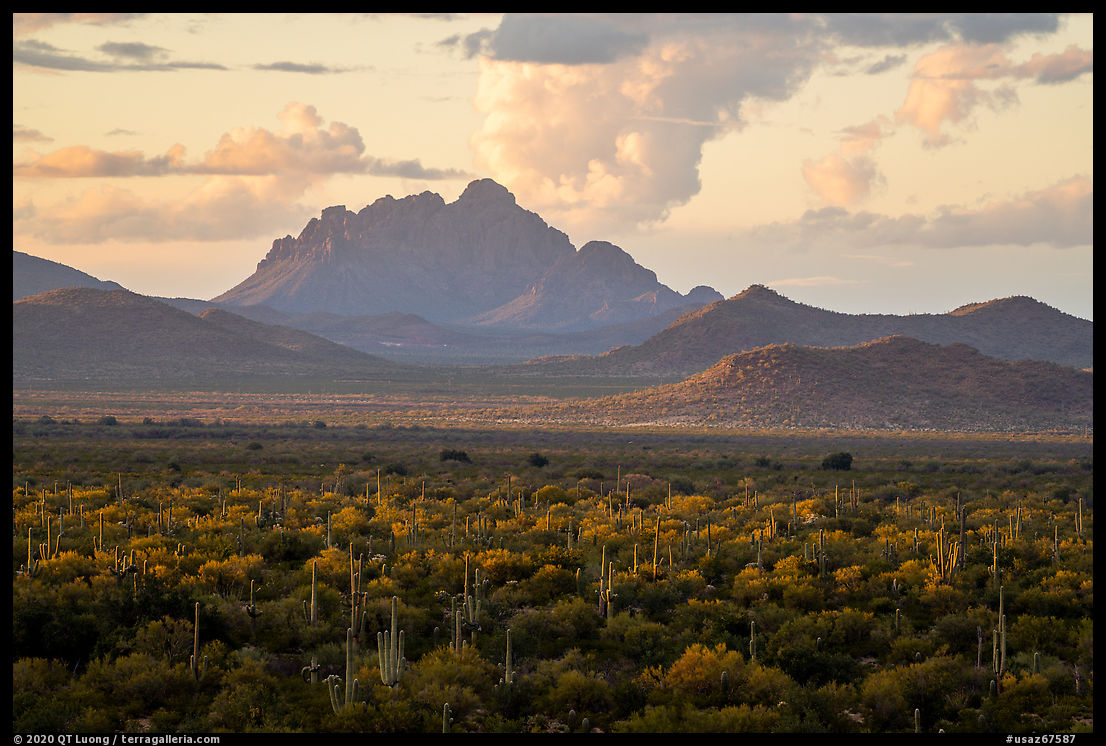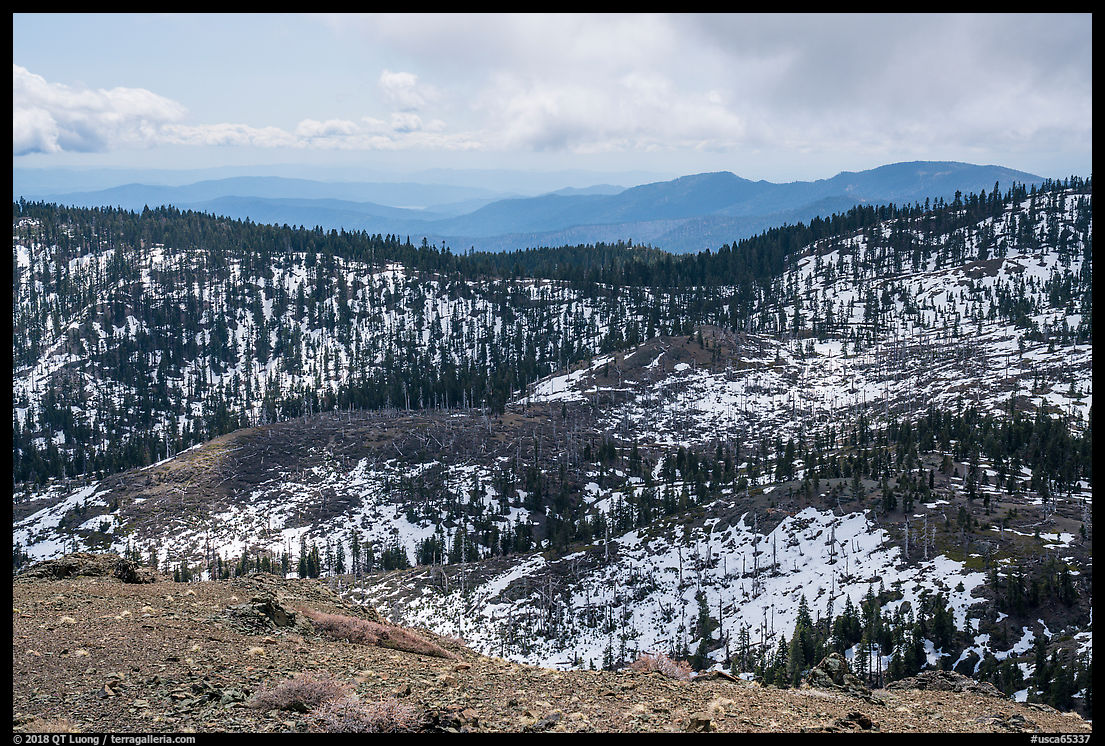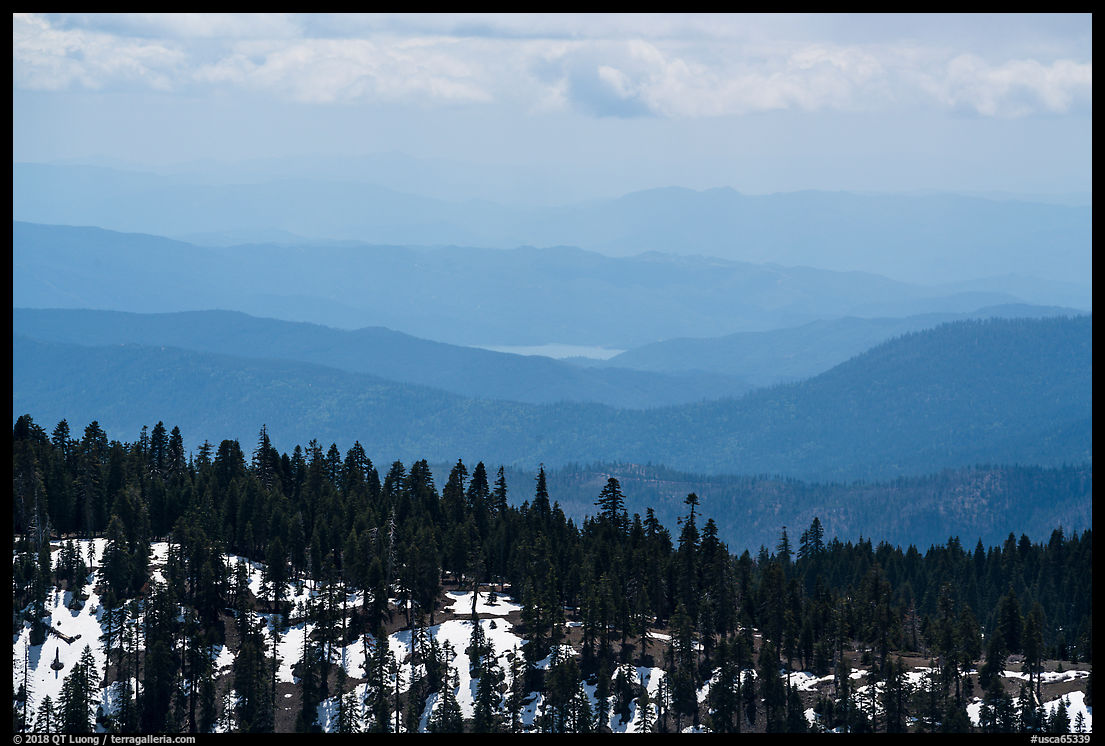Telephoto lenses in landscape photography
6 Comments
Landscape photography is often associated, or even equated with the use of wide-angle lenses, however, this can lead to formulaic compositions. Telephoto lenses may seem like the province of wildlife photography, however alternating with them brings new creative opportunities for landscape photography, as illustrated by the two opening images of Our National Monuments, compared to their wider counterparts.
For many years, I was heavily influenced by the near-far compositions of David Muench: a graphic and impactful foreground subject, with mountains in the background, all often below a dramatic sky. Photographers such as Galen Rowell would embrace that esthetic. His most used wide-angle lens was a 24mm, with the occasional 20mm, but since then the short end of the 16-35mm lens has become a standard, with focal lengths of 14mm, and more recently 12mm fairly common at a wide end of a zoom. Wide-angle photography was one of the main reasons I turned to a large-format camera – which is severely limited for telephoto lenses. There is much to be said for this approach. It helps place the viewer into the scene, depicting everything that someone standing there may see, naturally creating a sense of depth. On the other hand, they shrink the backgrounds, for example diminishing the impact of huge mountains and placing the emphasis on foreground elements that are more common than those mountains. If, in addition, you process them the same way, images can end up looking all the same.
Telephoto lenses are heavier to carry and more challenging to use than wide-angle lenses. Compositions need to be more precise, as small changes have greater effects. You have to look harder for them, as they form only a small portion of your field of view. The latest point is maybe what makes telephoto landscape photography so compelling: when you pick up a small portion of the scene, you direct the viewer to something that you found interesting but they may have missed. This makes those shots intrinsically personal. A group of photographers standing at the same scene with a wide-angle lens are much more likely to produce similar images than if they were using a telephoto lens.
Even with close to 500 pages, packing 60+ national parks in Treasured Lands was such a challenge that almost each image had to represent a different location. Our National Monuments had more room, and I could use multiple images to represent single locations. In two cases, I repeated images taken at the same time from the same viewpoint, looking in the same direction and differing only by the choice of the focal length.
Example 1: Our National Monuments cover
During the afternoon I spent at a petroglyph site in Ironwood Forest National Monument, besides close-ups of petroglyphs and flora, most of my compositions consisted of wide-angle photographs with etched rocks in the foreground. At sunset time, I made one more such photograph at the widest setting of my 16-35mm lens (page 247). The foreground includes the main mountains in the monument, Silver Bell and Ragged Top. However, being located more than 20 miles away and only about 4,000 feet high, they appear tiny on the horizon.

Because of my awareness of that mountain, I still noticed the distinctive profile of Ragged Top, the crown jewel of Ironwood Forest National Monument. Between two wide-angle shots, I zoomed into the peak with the 100-400mm lens for a single shot at 340mm. Although the resulting image is just a crop of the previous image, it is entirely different, conveying a sense of majesty rather than of space. The perspective looks natural enough that without comparison, I suspect you wouldn’t have known it was made with a super-telephoto lens. A bit of cropping enhanced the image’s symmetry, making it an excellent cover image for Our National Monuments.

Example 2: Our National Monuments half-title page
In Our National Monuments, there is a second pair of images where one is a crop of the other. They were photographed from the summit of Snow Mountain in Berryessa Snow Mountain National Monument. During my spring visit to the monument, the low-elevation hills were lush with an explosion of verdant grass and wildflowers. From the trailhead, it did not seem like Snow Mountain would live up to its name, but as I neared the summit, I found a landscape still emerging from the winter. Photographing towards the south let me include north-facing slopes with some snow.

The comparison between this image (page 83), and the following is even more striking because the two focal lengths are not that different. The wide image was photographed at 54mm, which by today’s landscape photography standards is quite long, and the telephoto image was photographed at 240mm. The graphic quality of the latter made it a good choice for the half-title page, the first image inside the book. One of the challenges with telephoto lenses is to create a sense of depth, as the perspective that helps create it with wide-angle images is now compressed. In this case, depth is created by atmospheric perspective, the drop off in warmth and contrast occurring naturally with distance, and it would have been ill-advised to apply a “dehaze” correction.

Technical challenges
Here’s a technical detail that illustrates the depth of field issues with telephoto lenses. When I photographed the Ragged Peak image, I thought that the cactus in the foreground were far enough that they would be subjects at infinity, like the mountains. I therefore used an aperture of f/8. On the Sony A7R4, diffraction begins to limit sharpness after f/6.7. On the LCD, the image looked sharp enough, but when reviewing the image at 100% on a computer screen, it turned out that the mountain was a bit soft because of insufficient depth of field. Applying Topaz Sharpen AI worked, but necessitated doing it selectively, as the software over-sharpened the mountain crest. You’d think that the difference would not be noticeable on a 10×12 inch print (the size of the book), and indeed the original image looks acceptable, but my daughter was able to tell the difference between two test prints viewed side-by-side. Using this Depth of Field calculator with the circle of confusion 10 microns appropriate for the Sony A7R4 61 MP full-frame sensor (2.5 times the pixel pitch 3.76 microns as explained here), we find a hyperfocal distance of 1,450 meters for 340mm and f/8. The hyperfocal distance is the closest distance you can focus on and still have perfect infinity focus. All this means that in this case, to get perfect infinity focus, I would have had to focus close to mile away! Would stopping down to a sharpness-degrading f/22 have helped? The hyperfocal distance would still be over 800 meters, or half a mile.Telephoto lenses can help you make different landscape images, but they present many challenges. Not only you have to pay more attention to compositions, but also they require a more careful technique. As we’ve just seen, depth of field is limited, particularly so with high-resolution sensors, so focusing has to be very precise, and even though the closest element may seem far at hundreds (or maybe thousands) of feet away, advanced techniques could be necessary. Since they amplify the effects of vibration, even in a small breeze getting a sharp image can take quite a bit of work. The next article will provide tips for working with telephoto lenses in the field.
Part 1 of 2: 1 | 2


Congratulations! Your award is well deserved! Thank you also for the time and detail you put into your blog. Stay safe!
Thank you
A timely post, as I am about to start shooting tree tops with tele!
Just pre-ordered your new National Monuments book. Look forward to seeing it later this year. Congratulations on the award QT!
Thank you Vince for your support!
A question please. You stated that you used an aperture of f/8 on the Sony A7R4, and that diffraction began to limit sharpness after f/6.7. How did you determine that? I would like to find the optimal range for each of my LF lens.
Oh PS, I love your post and your work.
One of the external links within the article explains it. If you use large format, here is a specific technique to find the optimal aperture detailed in an article I wrote a long time ago:
https://www.largeformatphotography.info/fstop.html